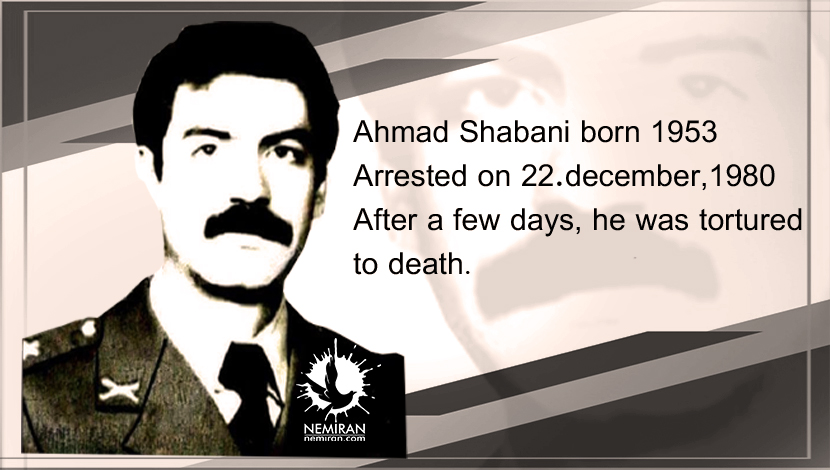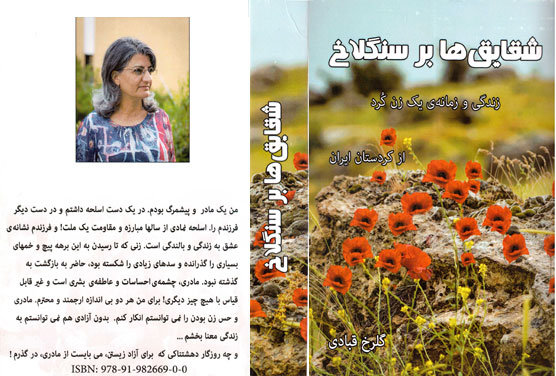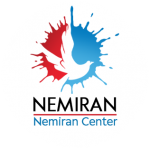Ahmad Shaabani and I got to know each other better and our relationship became closer due to our joint work and discussion. He was a communicative person and made very quickly cordial relationship with people. He was born in 1332 Iranian Calendar (1953) in Sanandaj into a middle class family. He had several brothers and one sister. His sister Shirin and I had met while working for the Women’s Council. I met Ahmed and his other brothers through Shirin, all of whom became political activists and later Komala Peshmergas. He was one of Komala’s first comrades. I knew him since the beginning of the demonstrations and protests during the Iranian revolution. He belonged to the left-wing and intellectual youth group. After the revolution, I rarely saw him in public protest circles. He later explained that he had been assigned by Komala to work in the Mahabad section of the organization since spring of 1979. On various occasions, we tried to tell each other about our situation and our history of struggle in order to get acquainted better to each other. He had studied agriculture at the University of Hamadan in 1351 (1972). At the same time he became acquainted with left-wing circles and followed his interests on Marxism issues. He participated in students’ struggles. After graduating from university, he had completed his military service as a duty officer in the Extension and Development Corps in the cities of Khoy, Baneh and Sanandaj. Due to his job position and profession, he made a close relationship with the people of the villages, especially the working class people. He helped them to raise awareness of their rights. In Sanandaj, he became acquainted with intellectual circles, amongst of them with the comrades of Komala. In the city of Baneh, he also contacted intellectual circles as well as working class people. Two of these comrades, Khalid and Mostafa Hamidi, joined the ranks of the Komala Peshmerga during the Revolution and lost their life in the Battle of Darsavin.
While being in Sanandaj Ahmad went to the countryside through his friends who were teachers in the villages and made close relationship with the people. In the city, he also worked as an electrician in the construction industry. Through the working process, he became closely acquainted with the problems of the workers and the oppressed class and continued to struggle alongside them.
He was one of the activists of the neighborhood council during the revolution. He also had participated in the struggles of the people of Marivan as well as the Marivan Peasants’ Union. Now that he was in Mahabad, his enormous experience and knowledge was evident due to his behavior and treatment of the people, especially the workers’ friends. He treated women and men equally.He always considered women in all fields. He even helped women with housework at parties and in labor circles. He encouraged them to sit next to men and to participate in discussions. He addressed this issue in organizational circles, especially when couples participated together. His presence in every meeting and assembly encouraged the women to participate more and more. One of the important things that Ahmed did was to sit next to the women of the family in every house and to ask about their situation. He paid attention to them and respected their opinions .Ahmed’s cordial behavior led in many cases to the situation where the women turned to him when they complained about their husbands. This was the reason why he discussed with men about backward and patriarchal attitudes.
Ahmed narrated that he had been working among the workers of brick stone factory for some time. He had acquaintances among them who lived in Mahabad City. They contacted him every year in spring, when they returned to the factory.
Ahmad had become a member of the Komala in the spring of 1359 (1980). It did not take long for the sharp sword of the Islamic Republic to stab Ahmad’s heart full of love and affection and kept it from beating forever. The regime was increasing the intensity of its arrests and attacks on cities and activists. In the meantime, the Mullah’s regime had obtained organizational charts and recognized the leaders and officials of these organizations by arresting the members of the organizations. We, in the city committee, asked Ahmad to leave the city and hide from the enemy, even for a short time due to the intensity of mass arrests. He did not agree with our proposal. Furthermore, he was of the opinion that he would not allow himself to leave his friends and comrades and only save his life under these difficult circumstances.

Ahmad was arrested on 10.10.1359 (31.12.1980)while carrying secret letters and documents. He could not destroy the letters on the spot. This issue became evidence that he was related to Komala. The regime resorted to the most brutal tortures to obtain information from him. News of Ahmed’s interrogation by his torturers later leaked from prison. His interrogation was passed on from mouth to mouth:
– Who are you?
-Ahmad Ahmadi (Instead of Ahmad Shaabani, whose real name was).
– What organization do you work with?
– I work for my organization Komala.
– Tell us the names of your comrades.
– I do not know anyone except Ahmad Ahmadi.
Ahmed did not utter a word other than Ahmad despite the most severe tortures. By resisting, he led his torturers to the brink of madness. He died after three days of enduring torture. Mahabad Radio station and the newsletter of the Revolutionary Guards spread the news of the arrest and execution of Ahmad Ahmadi with pride!! It added another leaf to their crimes. Ahmed did not even reveal his real name.
The news of Ahmad’s loss, although not unexpected, shocked everyone who knew him, including me. He was a revolutionary, devoted and popular man. “During a ten-day operation called ‘Operation Martyr Ahmad’, the Peshmergas of the Mahabad region inflicted heavy blows on the regime bases and bases inside the city and killed more than fifty Revolutionary Guards. On 27.10.1359 (17.01.1981), the Revolutionary Guard responsible for his arrest, torture, and execution was executed by the Peshmergas on Mahabad Street.” (Komala Newsletter 04.11.1359 (24.01.1981)).
I was shocked. I just cried and thought about the greatness and unselfishness of this unique man. How easy it is for the executioners of the Islamic Republic to take away these elite and devoted men from Kurdish nation. But what could I do, except continuing the path of men and women like Ahmad and Golriz for the freedom of humanity? I returned to Mahabad again.
A few days later, I went to the morgue together with a friend of mine. We asked a man who worked there about the burial place of Ahmed. The man recognized him by the signs we gave him. He asked us who we were. We said that were Ahmad’s relatives and came from Sanandaj on behalf of his mother. We begged him to show us his burial place and his belongings, if there are any items left by him, to hand them over to us to make sure he was dead. He brought us Ahmed’s wristwatch and a bloody and torn shirt and said: “I guessed that he was a politically activist through traces of torture on his body. I did not want to throw these things away. I thought maybe someone would look for him.” It was his wristwatch. He then explained how his whole body had been burned with iron and cigarettes. No bullet marks were seen on his body. He had obviously died under torture. Then he pointed to a tree nearby and said, “I buried him there.”
It was just a piece of ground and nothing else, absolutely anonymous. Farasat (my companion) and I sat on his grave for a few minutes and cried. Then we said goodbye to him forever and left him alone.

Golrokh Qobadi, Author of the book “شقایق ها بر سنگلاخ” (Anemones on rocks), pages 499 – 505

